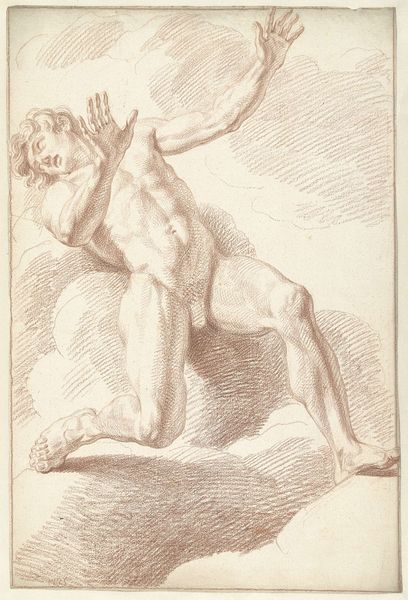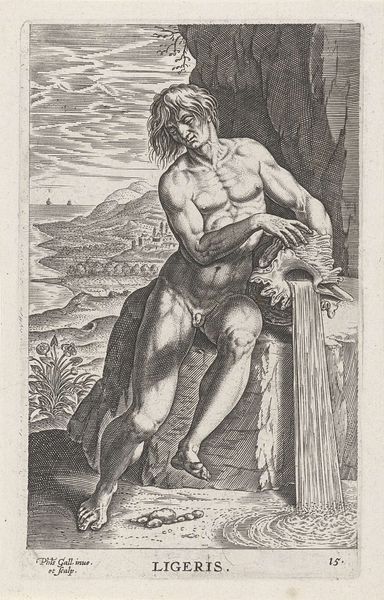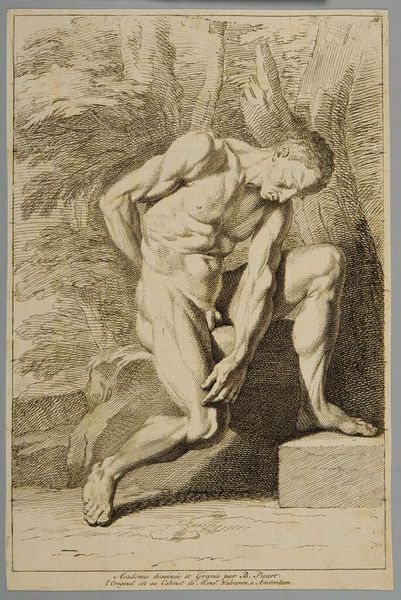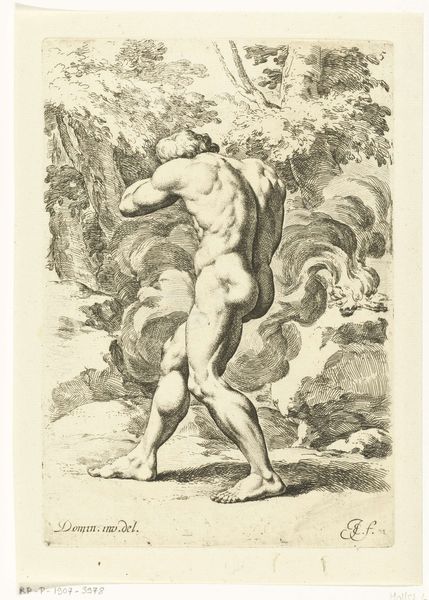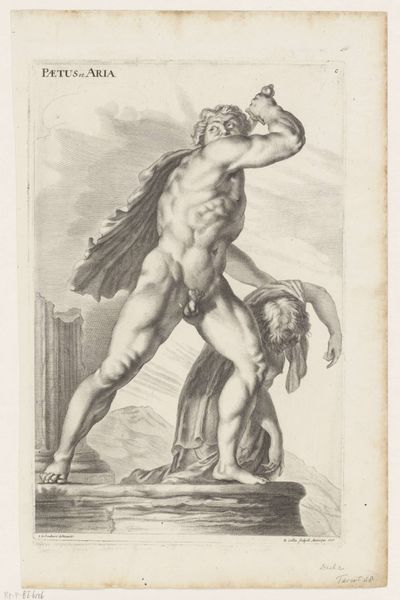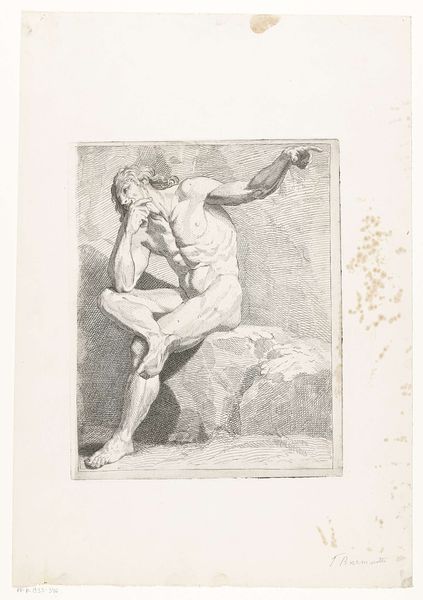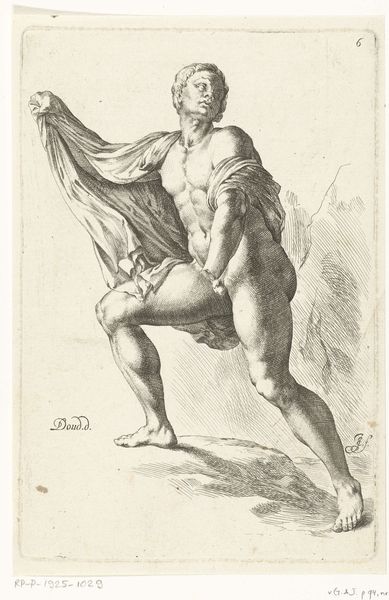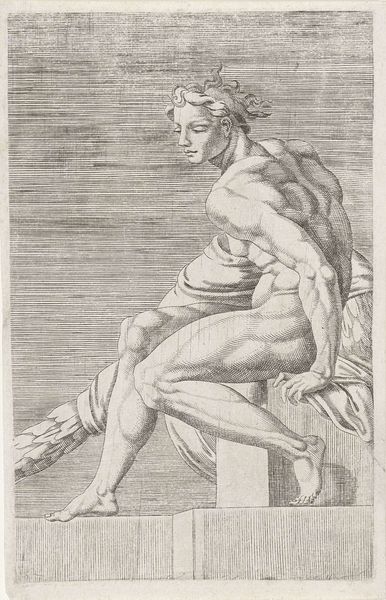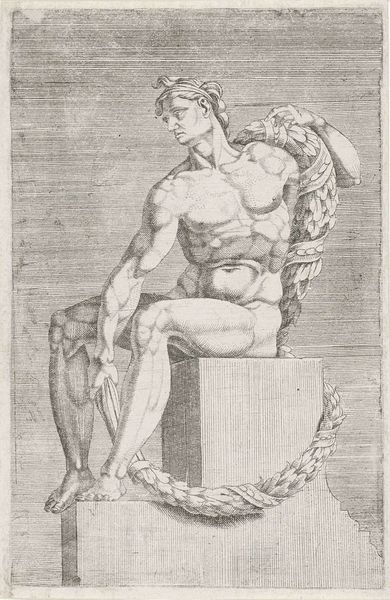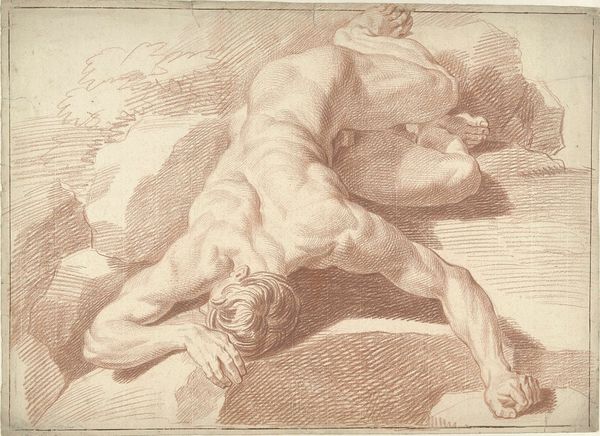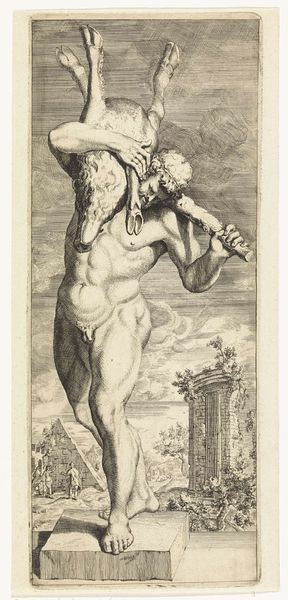
Dimensions: height 332 mm, width 220 mm
Copyright: Rijks Museum: Open Domain
Bernard Picart produced this print, "Naakte man in landschap," sometime between the late 17th and early 18th centuries. The initial impression is one of dynamic tension, achieved through the stark contrast between the muscular male nude and the textured, overgrown landscape. Picart's use of line is particularly striking. Notice how the dense hatching of the background throws the figure into sharp relief, while the figure’s sinuous form is rendered with a more delicate touch, emphasizing its contours. The composition is carefully balanced, with the figure's hunched posture echoing the curve of the tree behind him. This creates a sense of enclosure, almost as if the figure is trapped within the natural world. The figure can be viewed through the lens of Enlightenment ideals concerning the natural state of humanity. Picart seems to use the structure of the composition and form of the figure to create a tension that destabilizes the viewer's expectations. Is the figure meant to embody freedom, or is he trapped by the very nature that surrounds him? This tension reflects the complex philosophical debates of the time.
Comments
No comments
Be the first to comment and join the conversation on the ultimate creative platform.
